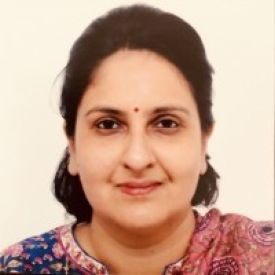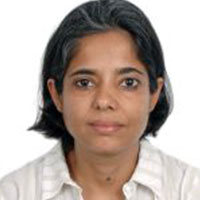Policy initiatives of JAM (Jan Dhan Yojana, Aadhaar, Mobile numbers) trinity and direct benefit transfer focus on unclogging the supply of benefits under welfare schemes by reducing payment leakages. This column shows that bottlenecks to the entry of deserving beneficiaries into such schemes and misallocation of resources to the ineligible are even more significant, and deserve similarly high-profiled attention.
The government’s interestingly abbreviated JAM trinity has the potential to revolutionise benefit transfer systems in India by unclogging delivery pipelines. A combination of the Jan Dhan Yojana 1, Aadhaar2 and Mobile numbers, the idea is a simple, yet powerful one – use Aadhaar (a unique identification number) to identify the beneficiary enrolled in a given scheme (Aadhaar is biometrically verifiable); transfer money directly into the individual’s Jan Dhan Yojana bank account (which is linked to his/her Aadhaar); and make use of India’s high mobile phone user base to intimate the beneficiary about the transfer, so that he/she may withdraw money from the bank or use mobile money where such services are available.
The trinity is being positioned as a game-changing reform that will allow transfer of cash benefits (scholarships or pensions) and price subsidies (such as those given for kerosene, liquefied petroleum gas (LPG) and public distribution system (PDS)) in a more efficient, seamless manner, with lower leakages. In this column, we argue that while JAM or direct benefit transfer (DBT) can help in reducing payment leakages due to partial or non-receipt of benefits, these measures need to be combined with addressing the other important dimension of improving delivery, which is reducing exclusion and inclusion errors. In a survey undertaken to assess the performance of elderly and widow pension schemes – which are among the most significant targeted, unconditional cash transfers in India – we find that payment leakage, in fact, is moderate. Arguably, the bigger challenge facing this cash transfer is enrolling all the eligible, and only the eligible (Bhattacharya, Jos, Mehta and Murgai 2015).
In an ideal world, a poor widow or elderly person should be able to gain entry into a pension scheme by fulfilling the mandated eligibility rules and going through an application process. On the ground, a number of factors militate against this outcome. Our survey of more than 8,500 households residing in the states of Delhi, Haryana and Uttar Pradesh (UP) and having at least one elderly person or widow as a member reveals what these factors might be3.
Stringent eligibility rules — or not?
An oft-echoed criticism of welfare programmes in India is the restrictive criteria they use to enroll beneficiaries. This is true for pension schemes as well. The central government uses a combination of age (60 plus for elderly persons and 40-59 for widows) and poverty (below-poverty-line (BPL) households) as a guidepost for deciding on the number of eligible beneficiaries in each state for elderly and widow pensions. However, BPL lists are known to be fraught with both inclusion and exclusion errors, are outdated and do not apply in urban areas. Arguments have also been advanced in favour of reducing the age limit for widows to 18 years and above; and increasing the pension amounts (from the meager Rs. 200 per month for elderly and Rs. 300 per month for widows).
However, many states in India, including two of the three we surveyed, have already relaxed these rules and/or increased pension amounts. Delhi, for instance, has moved away from the Centre’s stricter rule of paying pensions only to BPL households – it instead uses a self-reported income threshold (Rs. 5,000 per month) that renders many more persons eligible for participation. Pensions paid are also higher (Rs. 1,000 to elderly persons and Rs. 1,500 to widows), and age of entry is lower for widows (a group that Delhi re-labels as ‘women in distress’ to cover - in addition to widows - divorced, abandoned or separated women). Haryana uses a similar, self-reported income threshold (Rs. 50,000 per year). The only exception is UP which still uses the BPL rule for paying old-age pensions, but is liberal on widow pensions, by allowing poor widows and women in distress above the age of 18 into the net.
In other words, the entry criteria for pension schemes within states are not as stringent. On the contrary, they are relatively relaxed, at least on paper.
Insufficient budgets and inclusion of the ineligible
Relaxed eligibility rules should make entry into pension schemes easier. However our data on coverage (with the exception of Haryana) is pessimistic. Coverage rates - defined as percentage of target population covered as per the state’s own criteria - are reasonably high in Haryana, but Delhi and UP fail to meet their intended targets for both pension schemes by a significant margin.
What constrains poor elderly persons and widows from entering pension schemes despite the more liberal, eligibility criteria defined by these states? Budgetary constraints may partly explain exclusion or rationing of the deserving. For instance in UP, we found that pending applications were not considered if they exceeded the budgetary cap set for a given fiscal cycle4. New applications were only sanctioned in the event of "vacancies" (such as death, change in marital status etc.), which were, needless to say, difficult to confirm in the field. In Delhi, similarly, the "waiting time" for sanction of new applications was dependent upon approval of supplementary state budget funds, which could result in delays.
In a constrained budget environment, inclusion of the ineligible in the pensioner pool exacerbates (but cannot fully explain) the entry problem for deserving beneficiaries. Our survey data suggests that inclusion errors (defined as the percentage of pensioners who do not meet the state’s eligibility criteria for income or residence) are substantial. They range from one-fifth of widow pensioners and one-fourth of elderly pensioners in Delhi and Haryana, to one-third of elderly pensioners in UP. If all these ineligible pensioners were identified and weeded out (hypothetically speaking) the resources released would be sufficient, in some cases (such as Haryana) to cover the entire target population set by the state using its more liberal rules. In yet other cases – Delhi and UP – budgets would still be inadequate to cover the large numbers of those eligible, but excluded (more than 60% of our sample of widows in both states, about 70% of our elderly sample in Delhi, and about one in every two elderly persons interviewed in UP).
Explaining exclusion: Role of paperwork and politicians
What underlies such high exclusion errors? At one level, prospective applicants may be excluded if they are unable to put together the documentation needed to prove their eligibility. Surprisingly, this does not appear to be a real issue. In fact, if anything, both pensioners and those eligible but not receiving a pension in our sample, are well ‘documented’, migrants serving as a notable exception. On average, they submit three or more documents to prove their existence in the world of administrative records. More importantly, however, they incur substantial costs toward obtaining these documents; and have to submit this large number (instead of say, only an Aadhaar which acts as proof of residence, age, identity etc.), because of the multiple requirements that these schemes call upon them to fulfill. Take the case of elderly pensions in urban Haryana and Delhi. While both regimes appear to be near universal by using a self-declared income threshold that is higher than the BPL, Haryana is relatively more liberal on its domicile requirement (one year compared to five years in Delhi). It has also decentralised issuance of domicile certificates through automated citizen service centres. In contrast, in Delhi, applicants submit additional utility bills to establish continuous residence. Although Delhi has a system of witness attestation, it is rarely used, as most people are not willing to come forward to attest for someone else’s domicile. Similarly, while on paper, those sanctioning are to take the applicant’s word on ‘self-declared’ income, in practice officials we interviewed spoke about how they examined bank passbooks, utility bills and other documents as a proxy for income, to reduce errors of inclusion.
A related issue is the challenge of navigating the application process due to its complexity and lack of information. A majority of pensioners therefore end up approaching their local politicians, who further help them with their applications: collating them; signing them and recommending them (sometimes called for in the rules); and submitting them to relevant offices. In fact our data indicate that the main difference between the pensioners and those who are eligible but fail to gain entry (that is, are excluded), lies in the degree of ‘connectedness’ the former enjoy with politicians. It appears to be systematically important for entry, unlike characteristics like caste, education and wealth.
Twinning JAM with reforms in enrolment systems
Other than the significant problem of exclusion (and false inclusion), the pension schemes covered in our survey appear to be reasonably well targeted, that is, they reach more poor beneficiaries than rich. Levels of leakage – on account of partial payment of pensions or non-receipt due to inordinate delays – are also low. And while bribes have crept in, mostly explained as payments made to middlemen who help the elderly and widows withdraw money from far-flung bank branches, they can be curtailed if pensions are directly disbursed in bank accounts through JAM and are withdrawn using mobile money. However, these savings are unlikely to be of a scale and magnitude that are enough to accommodate substantial numbers of eligible applicants who are still excluded from the benefit net.
To make the most of JAM, it needs to be twinned with a proactive and systematic approach to identification and enrolment of households. The recently completed, fully digitised, Socio Economic Census (SEC) with data on a set of socioeconomic indicators for all households puts the country in its best position yet to set a system in place that could identify both eligible and excluded, and enrolled but ineligible beneficiaries. Focusing on enrolment is a game-changing reform for the poor, deserving of similarly high-profiled attention. Otherwise, we may be unclogging pipes for the undeserving, or leaving out citizens, even the most vulnerable, from receiving benefits of these schemes and reforms.
Notes:
- Jan Dhan Yojana is the National Mission for Financial Inclusion to ensure access to financial services, namely banking savings and deposit accounts, remittance, credit, insurance, and pension in an affordable manner. This financial inclusion campaign was launched by PM Modi in August 2014.
- Aadhaar is a 12-digit individual identification number issued by the Unique Identification Authority of India (UIDAI) on behalf of the Government of India. It captures the biometric identity – ten finger prints, iris and photograph – of every resident, and serves as a proof of identity and address anywhere in India.
- The survey, conducted in 2013, collected information on both pensioners and non-pensioners. For pensioner households, information on awareness about the scheme and eligibility criteria, documents possessed, application and payment experience was collected. For non-pensioners, the survey additionally collected information on whether the respondent met the programme criteria, besides information on failed attempts (if any) to enter the programme.
- Most states allocate budget for pension schemes in an ad-hoc manner. Symbolic ‘caps’ or ‘targets’ (example, an addition of 10% over previous year’s coverage) are set, with no explicit rationale on number of eligible beneficiaries. Schemes are administered following these physical targets fixed at the state level and distributed down to the last administrative unit, leading to potential delays in sanctioning of pensions to new applicants.
Further Reading
- Bhattacharya, Shrayana, Maria Jos, Soumya Kapoor Mehta and Rinku Murgai (2015), "From Policy to Practice: How Should Social Pensions be Scaled Up?", Economic and Political Weekly, Vol. L, No. 14, April 4, 60-67.




 09 December, 2015
09 December, 2015 






Comments will be held for moderation. Your contact information will not be made public.